Blog /
Georgia Landscaping Ideas for Your Yard

Georgia Landscaping Ideas for Your Yard
By Sarah Wael
Published: 05/07/2024 | Updated: 05/07/2024
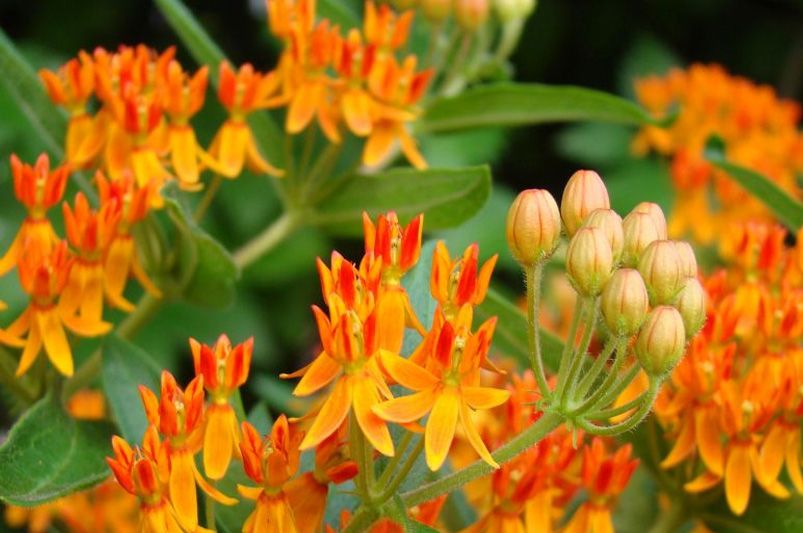
Home to some of the most breathtaking natural wonders, the state of Georgia holds exceptional beauty. There’s no wonder that every homeowner strives to bring this gripping natural experience right into their home. And how could they not? The Peach State’s rich environment, temperate climate, and diverse landscape open up a world of possibilities that spark up your home design. Whether you own a home at the heart of the bustling city or a stretching yard in the serene countryside, there’s a landscape design for you. In this article, we are going to explore the top 10 Georgia native plants that you can grow in your yard.


The Best Native Plants to Grow in Your Georgia Garden
In Georgia, wherever you go, you come across canyons, marshes, waterfalls, mountains, beaches, or forests. Each of these sights encompasses a remarkably wide range of plants. Just imagine bringing a few of them into your landscape design. It is a great way to step up your style game. From the lush vibrancy of Lady Fern to the calm vibes of Southern Magnolia, you can transform your yard into a dreamy escape in no time. Find below a list of ShrubHub’s favorite native plants for your Georgia garden to inspire your next renovation project.
Butterfly Weed, scientifically known as Asclepias tuberosa, is a species of milkweed native to North America. It is a perennial plant that belongs to the Apocynaceae family. Here are some key features and facts about Butterfly Weed:
Appearance: Butterfly Weed typically grows to a height of 1 to 3 feet (30 to 90 cm) tall. It has clusters of bright orange or yellow-orange flowers that bloom from late spring to late summer. The flowers are attractive to butterflies, bees, and other pollinators.
Habitat: It is commonly found in dry, sandy soils of open fields, prairies, and along roadsides throughout much of the eastern and southern United States, making them a perfect addition for your Georgia garden or landscape.
Ecological Importance: Butterfly Weed is a valuable plant for wildlife, especially monarch butterflies. It serves as a host plant for monarch caterpillars, providing essential food and habitat during their lifecycle.
Garden and Landscaping: It is popular in gardens and landscaping for its vibrant flowers and its role in supporting pollinators. It requires full sun and well-drained soil to thrive.
Growing Conditions: Butterfly Weed is drought-tolerant once established but benefits from occasional watering during dry spells, particularly when young.
Overall, Butterfly Weed is not only a visually striking plant but also an important contributor to local ecosystems, particularly in supporting the lifecycle of monarch butterflies.
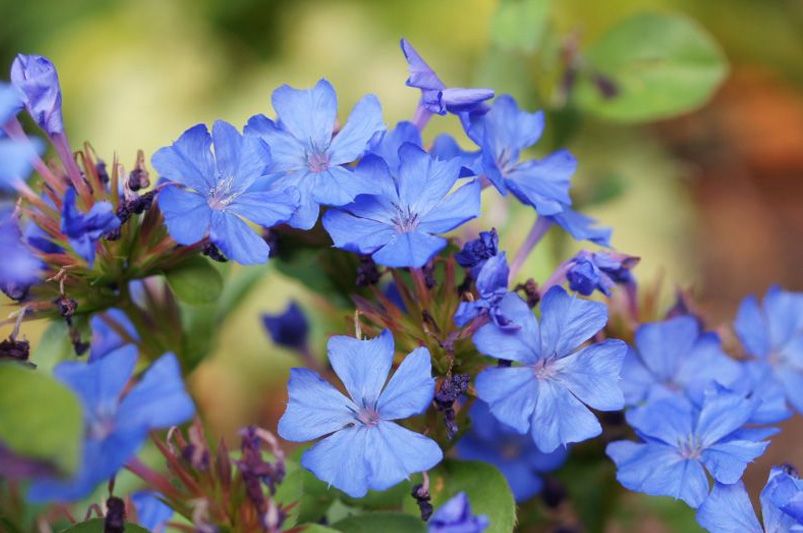
Plumbago, also known as Plumbago auriculata or Cape Leadwort, is a flowering plant native to South Africa. Here are a few key characteristics and details about the Plumbago plant:
Appearance: Plumbago is an evergreen shrub that can grow up to 10 feet (3 meters) tall and wide in optimal conditions. It has slender, woody stems and glossy green leaves that are lance-shaped and about 2-3 inches long.
Flowers: The plant produces clusters of small, five-petaled flowers that are typically blue, but can also be white or pink. The flowers have a tubular shape and bloom profusely throughout the summer and into fall in warmer climates.
Habitat: Plumbago thrives in full sun to partial shade and prefers well-drained soil. It is commonly grown in tropical and subtropical regions, which makes this a perfect plant for your Georgia garden or landscape.
Uses: Plumbago is popular in gardens and landscapes as a flowering shrub, often used for hedges, borders, or as a ground cover. It can also be trained to climb on trellises or fences.
Maintenance: This plant is relatively low-maintenance once established. It benefits from regular watering during dry spells but can tolerate periods of drought. Pruning can help maintain its shape and promote flowering.
Overall, Plumbago is prized for its vibrant and abundant flowers, as well as its adaptability to various growing conditions, making it a popular choice in gardens and landscapes in many parts of the world.
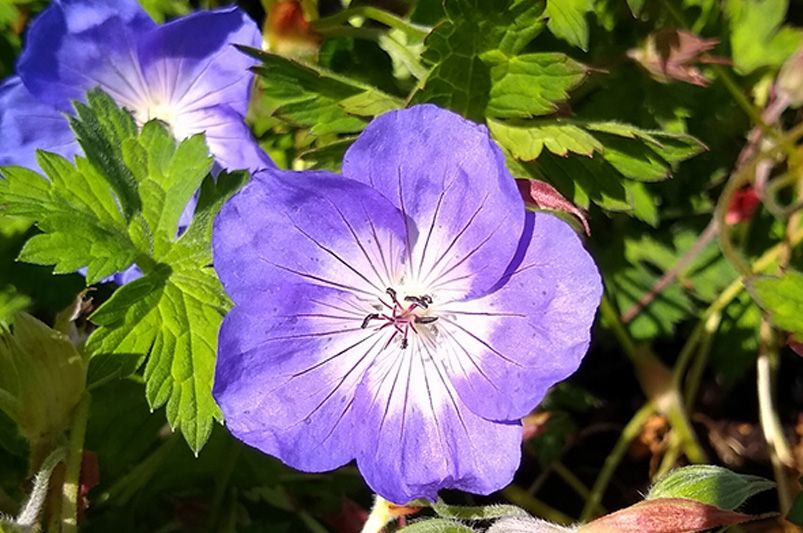
Geraniums, also known as Pelargoniums, are a genus of flowering plants native to southern Africa. They are popular ornamental plants cultivated worldwide for their attractive flowers and aromatic foliage. Here are some key features and details about geraniums:
Appearance: Geraniums are herbaceous plants that can be annuals, perennials, or shrubs, depending on the species and cultivar. They typically have rounded or lobed leaves that may be scented, especially when crushed. The flowers are clustered in umbels or loose clusters and come in a wide range of colors, including pink, red, white, purple, and bi-colors.
Habitat: Geraniums prefer full sun to partial shade and well-drained soil, so anywhere in your Georgia garden or landscape will accomidate this lovely plant, as long as the soil doesn't get too soggy. They are drought-tolerant once established but benefit from regular watering during dry periods.
Uses: Geraniums are widely used in gardens, containers, hanging baskets, and as bedding plants. They are valued for their long-lasting blooms and ability to attract pollinators like bees and butterflies.
Maintenance: Geraniums are generally easy to grow and maintain. Deadheading spent flowers promotes continuous blooming. Pruning and pinching back can help maintain compact growth and encourage bushiness.
Overall, geraniums are versatile and attractive plants that brighten gardens and containers with their colorful blooms and aromatic foliage. Their ease of cultivation and wide variety of forms make them popular choices among gardeners and landscapers worldwide.
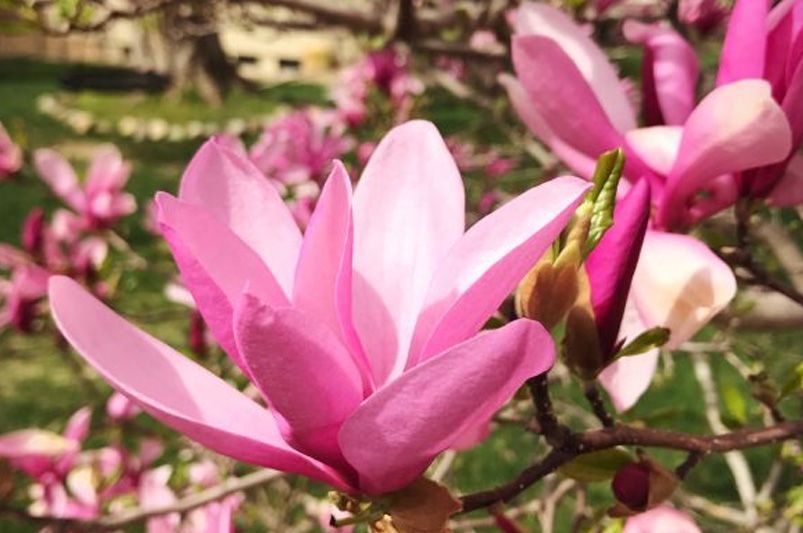
Magnolia trees are a diverse genus of flowering plants belonging to the family Magnoliaceae. They are renowned for their large, showy flowers and often fragrant blooms. Here are some key features and details about magnolia trees:
Appearance: Magnolia trees vary widely in size, shape, and appearance depending on the species and cultivar. They can be deciduous (shedding leaves seasonally) or evergreen. The leaves are typically large, broad, and leathery, ranging from 3 to 12 inches in length, depending on the species.
Flowers: The most distinctive feature of magnolia trees is their flowers. These are often large and conspicuous, with a bowl-shaped or star-shaped structure. Magnolia flowers come in shades of white, pink, purple, or yellow, depending on the species. They can be solitary or in clusters and are often fragrant, attracting pollinators like bees.
Habitat: They thrive in temperate to tropical climates and prefer moist, well-drained soil and are perfect for growing in Georgia. Some species are tolerant of slightly acidic conditions.
Garden and Landscape Use: Magnolia trees are prized for their aesthetic appeal and are commonly planted as specimen trees or in groupings to create focal points in gardens. They provide shade, beauty, and attract wildlife.
Maintenance: Depending on the species, magnolia trees may require regular pruning to maintain shape and remove dead or damaged branches. They generally require moderate watering, especially when young, and benefit from mulching to conserve moisture.
Overall, magnolia trees are treasured for their stunning flowers, elegant foliage, and cultural significance, making them popular choices for gardens and landscapes around the world.
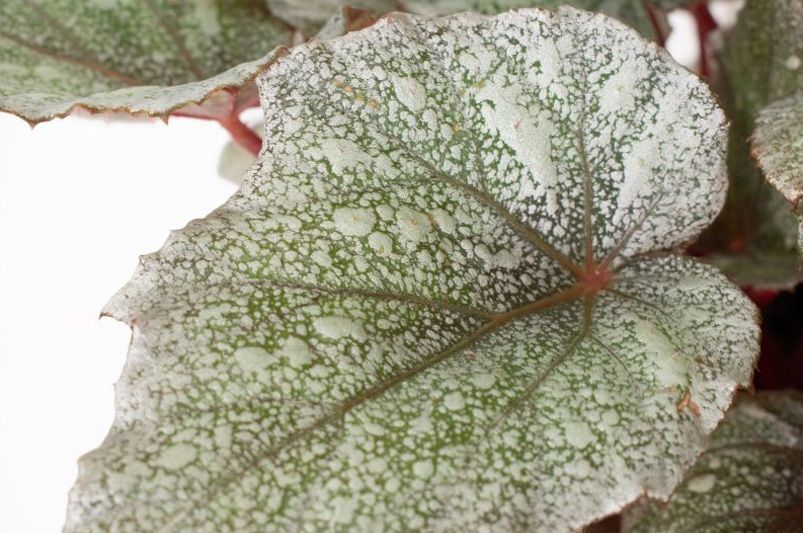
Visual Appeal: It boasts stunning leaves with a mix of dark green, silver, and hints of purple, highlighted by a metallic sheen. Its ethereal glow makes it an eye-catching addition to any collection.
Shape and Size: A compact plant, growing to about 12-18 inches in height and spread, perfect for indoor settings.
Growth: Prefers bright, indirect light and high humidity, with well-draining soil; sensitive to over-watering.
Plantation: Best in containers with peat-based, airy potting mix. It is suitable for indoors and in temperate climates outdoors.
Landscape Use: It masterfully brightens up indoor spaces with its jaw-dropping foliage. You can also plant it outdoors in shaded areas to showcase its dramatic foliage, while protected from frost.
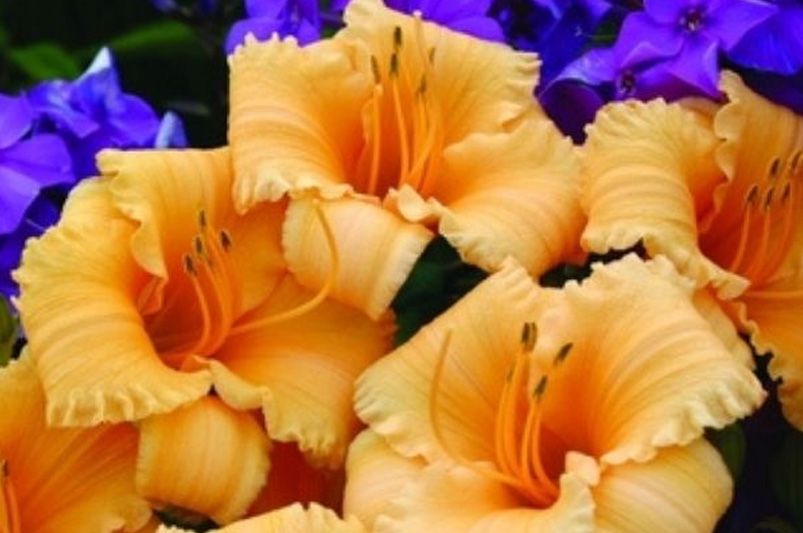
A daylily (Hemerocallis) is a flowering perennial plant known for its vibrant and colorful blooms. Here are some key features and details about daylilies:
Appearance: Daylilies typically have strap-like, grassy leaves that arise from a central crown. The leaves are usually around 1 to 2 feet tall, depending on the cultivar. The flowers grow on tall, slender stalks (scapes) that rise above the foliage. Each flower typically lasts for just one day, hence the name "daylily," but each stem usually produces multiple buds that bloom over several weeks.
Flowers: The flowers of daylilies come in a wide range of colors, including shades of yellow, orange, red, pink, purple, and bi-colors. They can be single-colored or have contrasting throats or edges. Some varieties are fragrant. Daylily flowers vary in size depending on the cultivar, ranging from around 2 to 6 inches in diameter.
Habitat: They are adaptable to various climates and soil types but generally prefer well-drained soil and full sun to partial shade, though are a perfect addition to your Georgia garden and landscape.
Garden and Landscape Use: Daylilies are versatile and valued in gardens and landscapes for their long flowering period, ease of care, and ability to thrive in various conditions. They are often used in borders, mass plantings, rock gardens, and containers.
Maintenance: Daylilies are generally low-maintenance plants. They require regular watering during dry spells but are drought-tolerant once established. Deadheading (removing spent flowers) can promote continuous blooming. Clumps may need dividing every few years to maintain vigor and bloom quality.
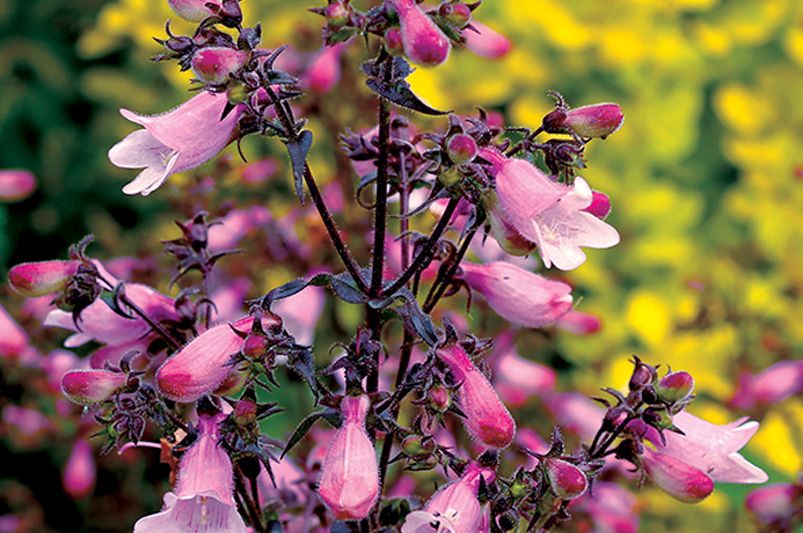
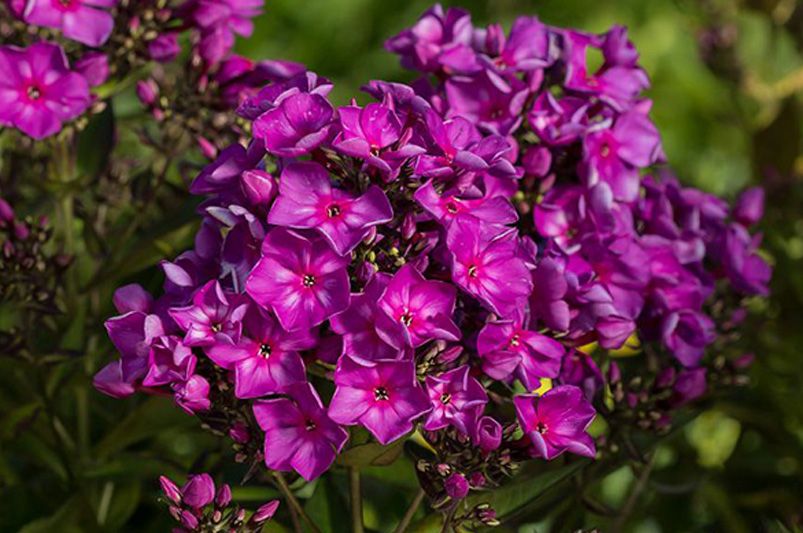
Phlox refers to a genus of flowering plants in the family Polemoniaceae, commonly known as phloxes. These plants are native to North America and parts of eastern Asia. Here are some key features and details about phlox:
Appearance: Phlox plants vary widely in size and appearance depending on the species and cultivar. They can be annual or perennial herbaceous plants. Perennial phloxes typically form clumps of upright stems with narrow leaves. The flowers are usually clustered at the top of the stems and can be star-shaped or funnel-shaped. Phlox flowers come in a range of colors including pink, white, purple, red, and bi-colors.
Habitat: Phloxes are adaptable plants that thrive in various habitats including prairies, woodlands, and rocky slopes, so you have options for using this plant in your Georgia garden or landscape. They generally prefer full sun to partial shade and well-drained soil. Some species are tolerant of dry conditions once established.
Flowering: Phloxes generally bloom from late spring to summer, with some species flowering into early fall. The flowers are attractive to butterflies, bees, and other pollinators.
Garden and Landscape Use: Phloxes are popular garden plants valued for their colorful blooms and easy-care nature. They are used in borders, rock gardens, containers, and as cut flowers. Creeping phlox is particularly useful as ground cover on slopes or in rock gardens.
Maintenance: Phloxes are generally low-maintenance plants. They prefer regular watering during dry periods but are tolerant of periodic drought. Deadheading spent flowers can promote prolonged blooming and prevent self-seeding in some varieties. Perennial phloxes benefit from dividing clumps every few years to maintain vigor.
Overall, phlox plants are valued for their vibrant flowers, versatility in garden design, and attractiveness to pollinators. They are a popular choice among gardeners for adding color and texture to landscapes, whether as borders, ground covers, or focal points in garden beds.
Need a little help keeping your garden in perfect shape? ShrubHub’s blog is here for you. With an extensive collection of articles, you access expert gardening tips, step-by-step guides, and DIY design ideas. Bookmark it now and plant like a pro!
Experience What It’s Like to Have Your Dream Yard
To sum up, the aforementioned list of plants is nothing but a reflection of Georgia’s distinctive, diverse nature. No matter if it’s the majestic appearance of Southern Magnolia or the warm hues of Butterfly Weed, these plants can truly enhance your outdoor experience.
To honor Georgia’s rich history and bring its gripping beauty home, you need to learn which of these plants belongs to your landscape design. This is where ShrubHub comes into the picture. Our talented designers will view your outdoor space and curate a detailed 3D design. In 15 to 30 days and for only $297, your dream yard will be ready.
Sign up now for free and get 70% OFF your landscape design!
ShrubHub.com














